- Rugby Toolbox
- Resources & Education
- Learn more
- Articles
- Snook on Coaching
- Under 11/13 – Back Attack
- Ruck & Run Drill
- Playing Philosophy – Ruck & Run Coaching Components
- Playing Philosophy – Spread the Forwards
- Playing Philosophy – A forward behind the ruck
- Playing Philosophy – Ruck & Run
- Playing Philosophy – An idea!
- The Breakdown
- Building Positivity [3]
- Building Positivity [2]
- Building Positivity
- Fitness and Game Related Activities
- Getting the Head Working
- Missiles are Dangerous
- Use of Video
- Winger Attacking Outside First-Five
- Player Profiling
- Selection
- Fitness Away from the Team Session
- Playing Philosophy (Pre season Prep)
- Coaching the Coaches
- The Rugby Coordinator and Pre-Season Preparation
- Why Not Use Tap Penalties More Often?
- Why Kick the Ball Down the Middle of the Field?
- Defending the 5 Metre Lineout Drive
- Scoring from the 5 Metre Lineout
- What are the Kicking Team Aiming to Achieve from Halfway Restart
- Should We Practice Scoring Tries?
- Team Culture
- Looking After Your Players
- Coach Survival Tips
- Under 11/13 – Backline Defence
- Under 11/13 – Ruck Defence
- Under 11/13 – Back Attack
- Under 13 – The Counter Attack
- Under 11/13 – The Maul
- Under 11/13 – Lineouts
- Under 11/13 – Decision Making
- Under 11/13 – Support Play
- Under 11/13 – Dive Pass and More
- Under 11/13 – Drop & Grubber Kick /Highball Catch
- Under 11/13 – Front on Tackling
- Under 11/13 – Contact – Getting Up – The Ruck
- Under 11/13 – The Coaching Session
- Under 8/10 – Using Space
- Under 8/10 – Kicking
- Under 8/10 – Contact and Picking Up the Ball
- U8/U10 Draw & Pass and Sidestep
- Under 8/10 – The Tackle
- Under 8/10 – The Coaching Session
- Under 7 – Test Your Coaching – Support Play
- Tap Pass and Swerve U7
- Ball Familiarisation; Passing & Receiving
- Activities for the Non-Contact Tackle
- Under 7 – The Coaching Session
- Coaching Teenagers – After the Ruck
- Coaching Teenagers – The Practice Session
- Coaching Teenagers – Best Practice
- Coaching Kids – Best Practice
- Plays from a Tap Penalty
- Running Plays from a 5 Man Lineout
- Driving Plays from a 5 Man Lineout
- Strike Plays at the End of the Lineout
- Back Strike Plays at the Lineout
- Wide Strike at the Scrum (2)
- Wide Strike at the Scrum
- Midfield Attack at the Scrum
- No 8 Plays at the Scrum (2)
- No 8 Plays at the Scrum
- The Cut Out Pass
- Skills to Penetrate (2)
- Skills to Penetrate
- Movements to Penetrate
- Patterns to Penetrate
- Contact and Continuity
- Keeping the Ball Alive Out Wide
- Pre Season Support Activities
- Checklist
- Understanding the game
- The Playing Philosophy
- The Lineout
- Overview
- Team Profile
- Start Now!
- Backrow
- Nine and Ten
- Rugby-related Fitness Activities
- The Psychological Edge
- Open Field Play
- Key Performance Indicators
- Improving Team Performance
- Backline Attack Concepts
- Tactics at Phase Play
- Playing Philosophy
- The ‘Stop Focus’
- Kick Attack
- Clearing the 22
- Wide Attack at Phase
- Player Focus
- Scrum Preparation
- Lineout Preparation
- Back Attack Preparation
- Sevens Preparation
- Sevens Kick Offs
- Sevens Scrum and Lineout
- Sevens Attack Patterns
- Sevens Defence
- 7's Selection and Game Planning
- Coaching and Leadership
- How the Game Evolves
- Changing Within the Game
- Learning from the Television.
- Using Tap Penalties Wisely
- Defence Drills
- Defence Drills for Tight Five
- Team Defence and TUB’ing
- Establishing Patterns from the Ruck
- Structured Phase Play
- Structuring Phase Play on the Run
- Coaching Roles
- Structuring a Close in Tackling/Defensive Session
- Coaching in Threes
- Attacking Back Play
- Kick Off Chase
- Wrap Around Back Plays
- Lineout Plans
- Looking and Learning
- Motivating Your Players
- Scrum Attack
- Refocusing the Team
- Monitoring the Progress
- Learning the Game
- Playing to the Laws
- Small is OK
- Decisions After the Tackle
- Improving Your Coaching
- Food for Thought
- More Food for Thought
- Passing & Catching
- How Ireland Nearly Beat the All Blacks
- The Progressive Coach
- Try Something New
- Encouraging Excitement
- The Mental Approach
- Where to Start
- Being the Best You Can Be
- Off the Ball Decisions
- Lineouts Difficult to Master
- Decisions on the Run
- Rucking and Rolling
- A Successful Approach
- Gaining Clarity
- Manipulation vs Physicality
- Beating the Drift
- To Ruck or Not to Ruck
- Stopping the Lineout Drive
- Fine Tuning the Planning
- It's a Running Game
- RugbySmart 2015
- Using the Shoulders
- Loosehead Prop / Tighthead Prop
- Position Specific – Hooker
- Position Specific – Lock
- Position Specific – Blindside Flanker
- Position Specific – Openside Flanker
- Position Specific – No 8
- Position Specific – Halfback
- Position Specific – First Five Eighth
- Position Specific – Second Five Eighth
- Position Specific – Centre Three-quarter
- Position Specific – Wing
- Position Specific – Fullback
Under 11/13 – Back Attack
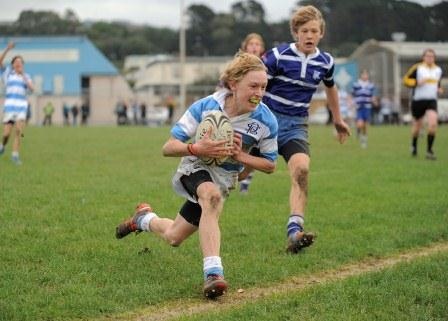
Objective
Penetration ---- Continuity ------ Scoring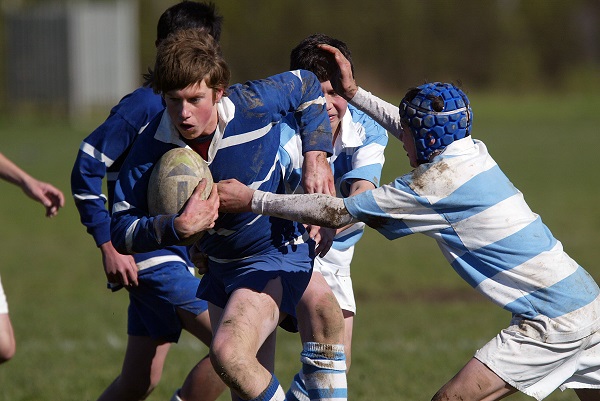
Key Factors
- Creating a starting alignment that allows the ball carrier sufficient time to make judgements through scanning and thinking. (TUB. Looking at Them – Us – Ball) Not too shallow.
- Run at the defender and pass away from them. Carry the ball in two hands initially.
- Each player should be deep enough to pass but close enough to commit the tackler.
- Practice and use the skills associated with attack – pass, catch, swerve, step, running in support.
- Each player in the backline (ball carrier, decoys, support players) should be a ‘threat’ through changing running angles, changing pace, and changing their depth and width.
- Players should keep the ball alive through passing and supporting before and after the tackle.
Important Concepts
The players should learn about the ‘attack’ line, ‘tackle’ line, ‘gain’ line and ‘defence’ line which will help with their understanding of what they are trying to achieve. (See diagram in this article)
Speed of thought, speed of passing and speed of running will increase as the skill level increases.
The ball carrier has three options: pass, run, or kick.
These skills have many variations and should be practiced in isolation and drills so that they can become part of the unit attack.
Lines influencing the attack
At practice the backline should carry out their play by the time they have reached the ‘tackle line’. This is where the attack meets the defence.
In planning your attack the penetration needs to take place on the tackle line.
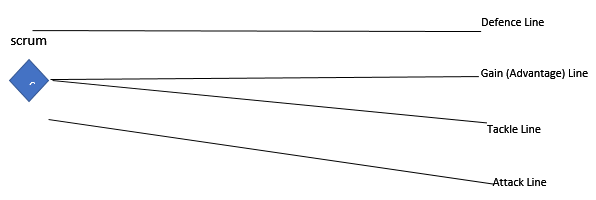
ACTIVITIES
1- Warm Ups in Channels
It is a good idea to mark out channels with cones so that the players build an understanding of running straight. (As parallel to the side-lines as possible)
The channels should be about 3 metres wide. Closer if they can’t pass that far and getting wider as they improve.
a) Lateral Passing. 3-5 players. If there are 4 or 5 include a miss pass so that one channel is completely left out when the pass is made. This can put the receiver in to a space.
b) Switch/Scissors: Player with the ball heads off on a lateral run in to the next channel. The player receiving the pass does not leave their channel until the one they are going to run in to is completely free. The space the ball carrier has just left is often the best space to attack.
c) Loop: the playmaker who has received the pass from the player about to loop needs to commit their (imaginary) defender by running at them and at the last moment change angle so that they are heading to the inside of their channel. The player wrapping will hit the space the ball carrier has just left and the man on the outside will run wider to draw away their (imaginary) defender and leave more space.
d) Let the players make up some patterns using lateral runs, decoys, miss passes, switches and loops or dummy loops. For every action there needs to be a corresponding action from the support players with the aim of putting the penetrator in to a space in which they can accelerate through.
Once the players become proficient with these activities add 1 defender if there are 3 attackers; 2 defenders if there are 4 attackers and 3 defenders if there are 5 in the attack channels. Start with the defender only being allowed in 1 channel. Then let the defenders cover all the channels as the attack improves.
2- Introducing an Extra Player
It is a good idea to mark out channels again so that the ball carrier and support players understand how to clear the space for the extra runner who is being set up as the penetrator.
a) 2 + 1 v 2. Blindside winger is the extra runner. Requires a player in the halfback position to get the play started.
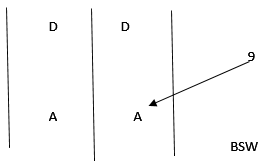
What do the attackers have to do to create space for the winger?
Where can the winger enter as a penetrator?
If the channel where the player enters changes, what changes do the attackers make?
b) 2 + 1 v 2. Fullback in as an extra runner.
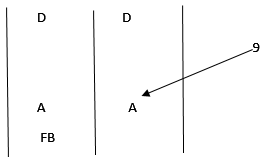
Where does the fullback enter?
From whom do they receive the pass?
What do the attackers do to create the space in each situation?
3 + 1 v 3 Fullback or blindside winger is the extra runner.
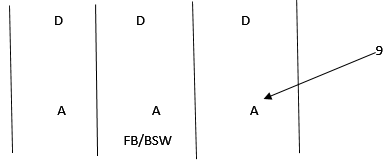
There are a whole host of opportunities from this set up.
It is a good time to check out the key factors such as the best alignment for your team – how deep and how far apart – so that the timing of the passing, running and penetrating all gels together.
Remember, the attack is trying to clear a channel for the penetrator. How do they do this? Everyone has a role, even the player on the far wing. What do they do to make it easier to penetrate outside 12 for example?
3- Strike Plays
Make up plays using a switch and a dummy switch, a loop and a dummy loop, and an extra runner as a penetrator or a decoy.
a) Try 12 doing a dummy loop with 13 with 13 then passing inside to the blindside winger.
b) 12 missing 13 straight to 15 is always a classic
c) 12 goes on a lateral run and scissors or dummy scissors with 13. If 13 receives the ball they could have the blindside winger running on their inside ready to penetrate. If 12 keeps the ball they should have 15 ready to burst on to a pass.
Get your team members to make up some plays. Choose the one they like the best. At this level you might not achieve both a loop and an extra runner in the same play but at least make the first step and remind all the players to back up and support. That is what will score tries.